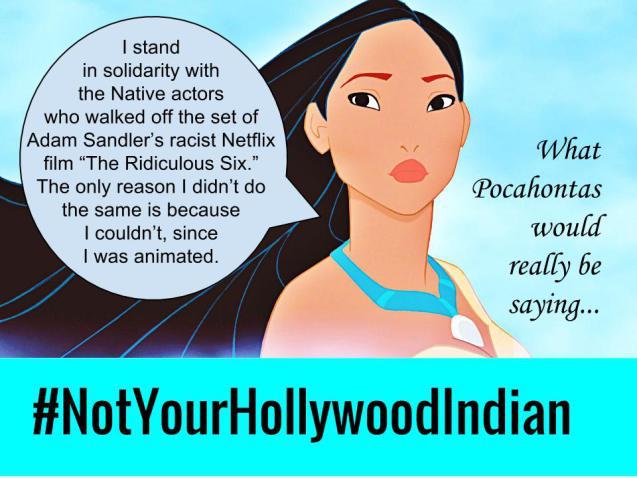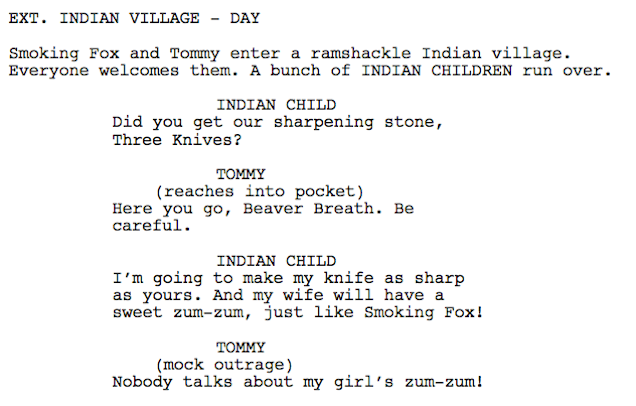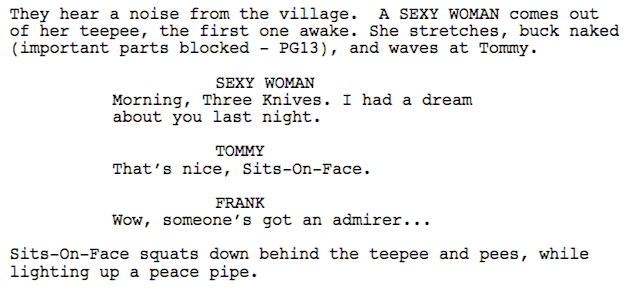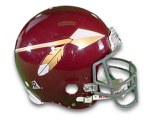Native activists tell Adam Sandler, Netflix they're #NotYourHollywoodIndian
Activists use hashtag #NotYourHollywoodIndian to pressure Netflix to cancel production of The Ridiculous Six
By John Bowman
"I logged into social media and saw that a ton of people were talking about it, but that the ideas weren't consolidated, so I decided to try to push it out there," she said.
"I'm just moved by how it has grown and seeing the people come out and support it, and seeing news articles reference it," said Red Shirt-Shaw. "I think that we have to stand as a united front."
She also co-founded a petition on Change.org urging Netflix to cancel the production of The Ridiculous Six.
"We're really hoping that we can build up the signatures that are on there and present this to Netflix in a way that will say 'We're not going to support you. People have already cancelled their subscriptions. You guys really need to evaluate whether or not this is a project you want to move forward with in the future,'" she said.
So far, Netflix remains committed to the movie.
By Jaynie Parrish
But, like many other marginalized groups, social media gives us a different way to amplify our message.
On Friday California writer Megan Red Shirt-Shaw created a hashtag, #notyourhollywoodIndian: “I applaud the actors who walked off that set,” she wrote. “A comedy directed & acted by Native American comedians would revolutionize comedy.”
Hashtags like these allow people to say what they believe without the filter of the mainstream press–and even to the mainstream press. Being heard gives us the ability to hold people accountable, even big name movie stars.
Hashtags aren’t enough, of course–they’re not our votes. And our outrage should also be directed at critical matters like better health care, safe water and improving the social and economic conditions Native Americans continue to face. A terrible Adam Sandler isn’t the worst of our problems–but if it brings us together and gives us a public platform, perhaps, inadvertently, the bigotry on display in his film will be a starting point for how we do change the world.
By Arturo R. García
Red-Shirt Shaw: I would be lying if I didn’t say I hope they cancel this film—but I’m also still waiting to hear from the comedian himself. Until then, let’s keep telling him “Hey Adam, we’re #NotYourHollywoodIndian—let’s talk.”What do you think?
What happens next, both for this campaign and Native In America?
Red-Shirt Shaw: I hope that #NotYourHollywoodIndian changes the conversation in the film industry about Indigenous identity and that the movement is productive, that ultimately people are using their positivity and power to educate. I hope that Natives In America takes over the world. Period. On a smaller scale … I hope the entire amazing NIA team knows how much they are surprising and inspiring people with their stories about being Native in the 21st century. Until we break through that glass ceiling of who America thinks we are, we have to keep telling our tales. And we will.
By Russell Contreras
For example, in 2013, some Native Americans were critical of Johnny Depp's portrayal on Tonto in the Disney version adaptation of "The Lone Ranger." Depp spoke in broken English, chanted prayers and wore a stuffed crow on his head. However, after a campaign by the movie to improve its image with Native Americans, Depp was eventually embraced on the Navajo Nation and was later adopted into the Comanche Nation.
A year before, the band No Doubt was forced to apologize and pull the music video "Looking Hot" after lead singer Gwen Stefani was criticize for dancing around teepees and wearing a series of American Indian-styled outfits.
For more on Adam Sandler, see Native Actors Denounce Sandler and Vanilla Ice Defends Ridiculous 6.























